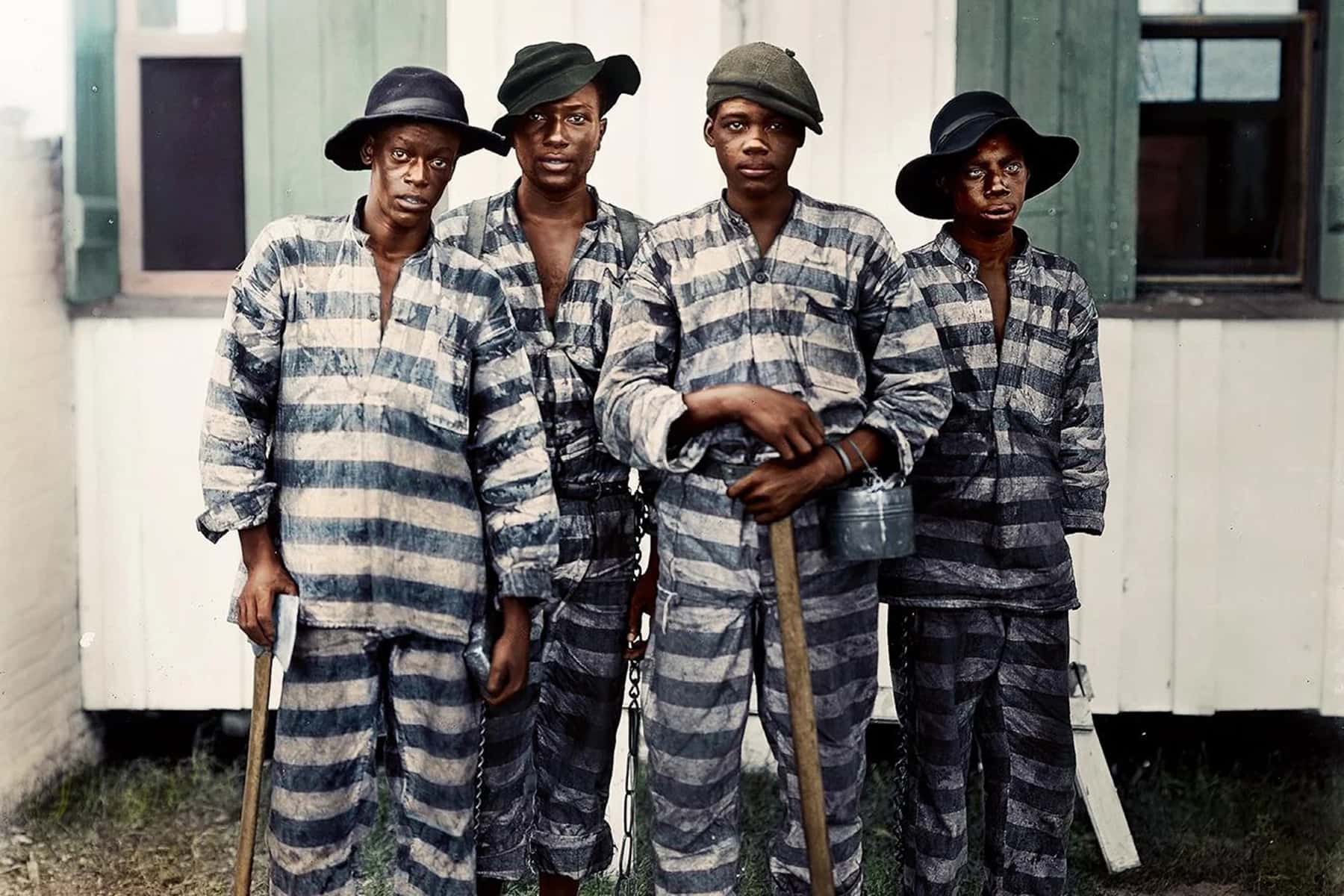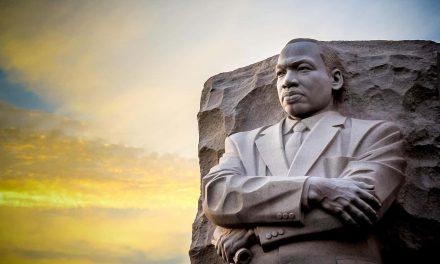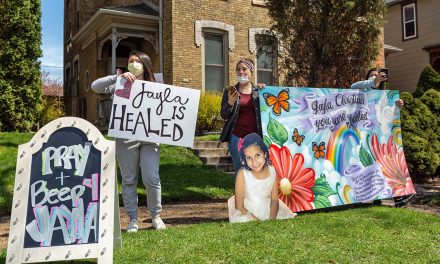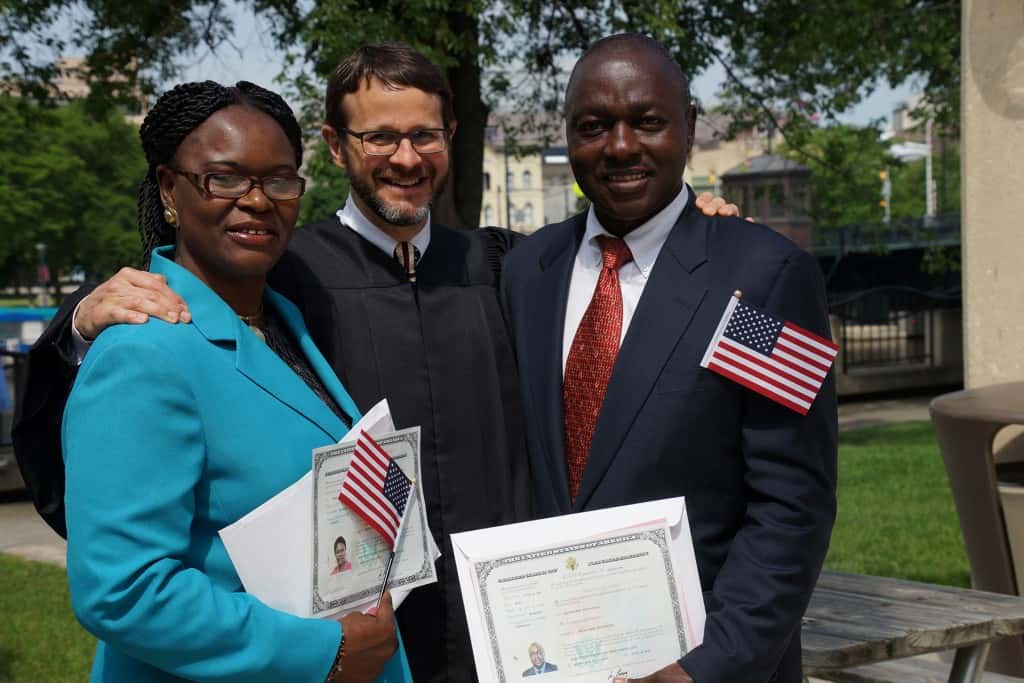
“Not a breeze comes to us now from the late rebellious States that is not tainted and freighted with negro blood. In its thirst for blood and its rage for vengeance, the mob has blindly, boldly and defiantly supplanted sheriffs, constables and police. It has assumed all the functions of civil authority. It laughs at legal processes, courts and juries, and its redhanded murderers range abroad unchecked and unchallenged by law or by public opinion. Prison walls and iron bars are no protection to the innocent or guilty, if the mob is in pursuit of negroes accused of crime. Jail doors are battered down in the presence of unresisting jailors, and the accused, awaiting trial in the courts of law are dragged out and hanged, shot, stabbed or burned to death as the blind and irresponsible mob may elect. We claim to be a Christian country and a highly civilized nation, yet, I fearlessly affirm that there is nothing in the history of savages to surpass the blood chilling horrors and fiendish excesses perpetrated against the colored people by the so-called enlightened’ and Christian people of the South.” – Frederick Douglass, “The Lessons of the Hour” speech (January 9, 1894)
America’s criminal justice system has had a long history of not only not protecting the lives of Blacks, but has been complicit in violence against them, up to and including murder. South Carolina during the seventeenth century had more enslaved Africans than Whites. The constant fear of slave revolts led them to put into place voluntary slave patrols. Their task was to enforce the multitude of rules and regulations which controlled the daily lives of Blacks. Something as simple as moving beyond the plantation without a written pass led to severe punishment.
In 1671 Charleston S.C. deployed a night watch using constables and a rotation of citizens to patrol and keep a close watch on the enslaved Blacks. A 1696 law required all able-bodied White men to serve in these slave patrols, according to Sally E. Hadden’s, Slave Patrols: Law and Violence in Virginia and the Carolinas.
The early patrols which the Africans called “paterollers,” would eventually become paid patrols in multiple states. South Carolina passed a law requiring they be paid in 1734. The 1739 Stono slave rebellion led to stricter slave codes, night watches and the conversion of these patrols effectively into the first police force in the nation. Eventually slave jails would be built to house runaways or Blacks wandering without passes.
By the time the 1850 Fugitive Slave Act was passed, states began to give wide ranging authority to the patrollers to use whatever violence they saw fit to punish runaways or Blacks violating the strict rules that guided their every movement. They could enter the homes of Blacks and punish them in any way they saw fit. They were widely feared for the violent tactics they used. One enslaved man who ran away and was chased by the patrols decided to take drastic measures.
“At last, finding that he cannot escape, he ran into a blazing furnace and was burned to death rather than be caught and suffer the tortures that awaited him.” – WPA Slave Narratives Project
After the Civil War ended, laws known as Black Codes were written throughout the South. Some of these codes were simply vagrancy and loitering prohibitions which were only enforced against Black men and boys.
Due to the language of the Thirteenth Amendment, saying that slavery was legal as “a punishment for crime whereof the party shall have been duly convicted,” a system that forced Blacks back into slavery for being accused and convicted by their former enslavers developed. Douglas A. Blackmon wrote about this system in his book, Slavery By Another Name: The Re-Enslavement of Black Americans From the Civil War to World War II. One of these new forms of enslavement was the convict lease system and debt slavery where Black men and boys were arrested, charged with a crime, forced to pay a fine and then sold to anyone who wanted free labor.
“In Alabama alone, hundreds of thousands of pages of public documents attest to the arrests, subsequent sale, and delivery of thousands of African Americans into mines, lumber camps, quarries, farms, and factories. More than thirty thousand pages related to debt slavery cases sit in the files of the Department of Justice at the National Archives. Altogether, millions of mostly obscure entries in the public record offer details of a forced labor system of monotonous enormity. Instead of thousands of true thieves and thugs drawn into the system over decades, the records demonstrate the capture and imprisonment of thousands of random indigent citizens, almost always under the thinnest chimera of probable cause or judicial process. The total number of workers caught in this net had to have totaled more than a hundred thousand and perhaps more than twice that figure. Instead of evidence showing black crime waves, the original records of county jails indicated thousands of arrests for inconsequential charges or for violations of laws specifically written to intimidate blacks — changing employers without permission, vagrancy, riding freight cars without a ticket, engaging in sexual activity — or loud talk — with White women.”
The system was not dismantled until the 1940s. Their only real crime was being born Black. By the 1920s, Blacks who were just eleven percent of the population in the country, represented over thirty percent of all people incarcerated in the nation’s jails and prisons.
As a little boy I grew up watching a variety of cop shows on television. The police were always the good guys. The system always led to finding “justice” at the end of each episode. I never once doubted that the system was fair. I had never heard any narrative that said otherwise.
Michelle Alexander’s book, The New Jim Crow: Mass Incarceration in the Age of Colorblindness, provided the evidence I had never been exposed to of the system being intentionally discriminatory.
“When I began my work at the ACLU, I assumed that the criminal justice system had problems of racial bias, much in the same way that all major institutions in our society are plagued with problems associated with conscious and unconscious bias … By the time I left the ACLU, I had come to suspect that I was wrong about the criminal justice system. It was not just another institution infected with racial bias but rather a different beast entirely…I came to see that mass incarceration in the United States had, in fact emerged as a stunningly comprehensive and well-disguised system of racialized social control …”
The system she spoke about could not have turned out much different than it did because racism was embedded into it from its earliest days. One of the common threads of the lived experience of Blacks in America has been the constant threat of violence. Massive doses of violence were used to enslave millions of Blacks in this country from the days of the early colonies through the end of the Civil War.
One early example which showed the importance of violence is a little known book written by a Dr. Collins in 1811. His book, Practical Rules For the Management and Treatment of Negro Slaves in the Sugar Colonies, gave specific instruction about how to use violence to drive compliance.
“A slave being a dependent agent, must necessarily move by the will of another … hence the necessity of terror to coerce his obedience … It is therefore, by the gross operation of fear … that negroes are wrought upon to action … discipline must consist in accustoming your negroes to an absolute submission to orders … the corrective discipline, or punishment … is either stripes chains, confinement, or all of them.”
As some four million Blacks were beginning to get a taste of freedom, White terrorist organizations began to pop up to ensure they were not to enjoy that freedom. The most well known of these was the infamous Ku Klux Klan, founded in Pulaski, Tennessee just after the war ended. They would become much more than just a group that terrorized, beat and raped Blacks. They became a part of the fabric of the White community, controlling the criminal justice system.
“In the courts of this invisible, silent, and mighty government, there were no hung juries, no laws delayed, no reversals, on senseless technicalities by any Supreme Court, because from its Court there was no appeal, and punishment was sure and swift, because there was no executive to pardon. After the negro had surrendered to the Ku Klux Klan, which he did by obeying their orders to the very letter, (for they feared that organization more than the devil and the dark regions) the Invisible Empire vanished in a night, and has been seen no more by mortal man on this earth.” – The Ku Klux Klan, or Invisible Empire (1894)
The Klan would return in 1915 and have members in nearly every state by the early 1920s. The savage violence against Blacks that would mark the ugly years of the late eighteenth and early nineteenth centuries were simply the continuation of the lawlessness which had pervaded the southern states during Reconstruction. The murderous mobs of Whites were simply allowed to do whatever they chose with little to no intervention by police.
The legal system that developed was known by Blacks as “Negro Justice.” It was an unwritten, de facto, separate legal system. Blacks knew very clearly that the system was not designed to protect them or provide justice when they were the victims of crime. In fact, it was designed to do the exact opposite, ensure that justice was impossible for Black people.
The Equal Justice Initiative (EJI) in Montgomery, Alabama has documented over four thousand racial terror lynchings of Blacks.
“During the period between the Civil War and World War II, thousands of African Americans were lynched in the United States. Lynchings were violent and public acts of torture that traumatized Black people throughout the country and were largely tolerated by state and federal officials. These lynchings were terrorism. ‘Terror lynchings’ peaked between 1880 and 1940 and claimed the lives of African American men, women, and children who were forced to endure the fear, humiliation, and barbarity of this widespread phenomenon unaided … EJI has documented 4084 racial terror lynchings in twelve Southern states between the end of Reconstruction in 1877 and 1950, which is at least 800 more lynchings in these states than previously reported. EJI has also documented more than 300 racial terror lynchings in other states during this time period.”
What made many of these lynchings possible was the complicity of police. They often times opened jail doors, after arresting Blacks on spurious charges, allowing lynchers to take the law into their own hands. Instead of protecting those Blacks accused of crimes so that the system could provide them due process and the ability to defend themselves against false charges, they were thrown to the wolves, tortured, burned alive and murdered in front of crowds in the thousands.
The barbarity of the lynchings was accepted by police, who in many cases directly participated in the violent acts. This murderous orgy over decades would eventually give way to a criminal justice system that provided the same punishment for Blacks, the death penalty.
The death penalty enacted by state after state, was rife with discrimination and Blacks knew they had few options to find competent defense. Even in those rare cases where they found it, all-White juries would ensure they were found guilty nearly every time they were tried in a southern court.
A parallel punishment system which mirrored lynch mobs was the use of public executions. The same large crowds of Whites came out to see Blacks die in a legal ritual much like lynching. The same festive atmosphere seen at lynchings were replicated at public executions of Blacks when they were accused of murder or some sexual crime against a White female. Any simple accusation was all that was needed to be found guilty by a jury of people who were certainly not your peers.
The last public execution in the nation took place when Rainey Bethea was hanged in front of a crowd of 20,000 people on August 14, 1936 in Owensboro, Kentucky. After being beaten he confessed to the rape and murder of a seventy year old White woman. He was never charged with murder because the punishment would have required him to be killed in the electric chair. Rape was punishable by hanging in the public square.
When word spread that a White female executioner would take her husband’s place led to a massive international audience of journalists descending on Owensboro. Among the crowd were Whites selling food and beverages for the festive occasion. The atmosphere was as frenzied and barbaric as those seen at spectacle lynchings.
The woman refused to carry out the hanging and a man was called in at the last minute to take her place. The mob was not happy about the change. Those international journalists from Europe also missed their opportunity to write about a White woman executing a Black man. Their anger over missing that special story led to them instead calling Americans barbaric for the ritualistic nature of the execution. This led to calls to end public executions because of the national embarrassment that came about when newspapers all over Europe proclaimed Americans were uncivilized.
When rape was still punishable by death, the disparities between Black men and White men was immense. By the time the laws changed some 455 males had been executed for rape. Of those, 405 were Black. This disparity in the use of the death penalty is still present today.
After the death penalty became legal again in 1973, executions began in earnest in 1976. Of the 1,542 state, federal and military executions carried out, 529 (34.3%) of those executed have been Black. The Death Penalty Information Center keeps a running tally of executions and provides evidence of the value of White victims outweighing those of Black victims.
“More than 75% of the murder victims in cases resulting in an execution were White, even though nationally only 50% of murder victims generally are White.”
When it comes to interracial murders, 300 Blacks have been executed for killing Whites while only 21 Whites have been executed for killing blacks. Many of the Whites executed were serial killers with victims of multiple races. Another stark reminder of the disparity is that more Blacks have been executed for killing White people (300) than for killing Black people (194).
A total of 809 Whites have been executed for killing other Whites. Of the 529 Blacks executed, 57% killed a White person and just 36.7% killed a Black person. On the other hand, 857 Whites have been executed. Among these, 94.4% of them had White victims and 2.5% had Black victims.
One of the most egregious miscarriages of justice for Blacks was the case of Roy Bryant and J.W. Milam being acquitted for the murder of 14-year-old Emmett Till in Mississippi in 1955. This kidnap took place only 37 miles from my hometown. Till was visiting relatives in Money, Mississippi for the summer and was accused by Carolyn Bryant of flirting with her. Bryant and Milam kidnapped Till from his uncles’ house at gunpoint, and brutally tortured Till before shooting him in the head and killing him. They wrapped his body with barbed wire, attached it to a cotton gin fan and tossed Till into the Tallahatchie River. The body floated back to the surface and was found by a fisherman.
Milam and Bryant were eventually arrested, and charged with the kidnap and murder. During the trial the prosecutor told the jury that, “Every last Anglo-Saxon one of you has the courage to set these men free.” They deliberated for 68 minutes and came back with a not guilty verdict. One juror later said: “We wouldn’t have taken so long if we hadn’t stopped to drink pop (soda).”
Till’s mother, Mamie Till demanded an open casket funeral for her son in Chicago and an estimated 50,000 people viewed the mangled head of Till. Ebony Magazine printed the gruesome images for the world to see what happened to Till. This murder and acquittal galvanized the Black community nationwide and was one of the sparks for the Civil Rights Movement.
What made it even worse, was that due to double jeopardy laws meaning the two men could net be tried again, they confessed to Look Magazine. Each was paid $1,500 and their attorneys received $1, 000 each for the interview. On January 24, 1956 Look Magazine published the article “The Shocking Story of Approved Killing in Mississippi.” Bryant’s words sound very similar to the words of many Whites today who clamor about their rights.
“I never hurt a nigger in my life. I like niggers – in their place … But I just decided it was time a few people got put on notice. As long as I live and can do anything about it, niggers are gonna stay in their place. Niggers ain’t gonna vote where I live. If they did, they’d control the government. They ain’t gonna go to school with my kids. And when a nigger gets close to mentioning sex with a White woman, he’s tired o’ livin’. I’m likely to kill him. Me and my folks fought for this country, and we got some rights.”
The deaths of George Floyd and Breonna Taylor at the hands of police in 2020 galvanized a movement to demand that Blacks receive fair treatment when they have contact with police. Floyd’s videotaped death was the one that led to worldwide protests and an eventual guilty verdict for the officer who killed him in Minneapolis, Minnesota. He was one of a long list of Black men, women and children killed by police in the past ten plus years. The viral videos, of Eric Garner, Philando Castille, and Laquan McDonald and stories of the dozens of Black women, men and children killed by police bubbled over into a racial reckoning never seen before in the country.
Back in 1992 the videotaped beating of Rodney King in Los Angles led to civil unrest and promises of reform which have not played out. Likewise, the protests after Floyd and Taylor were killed have led to few significant reforms. Just recently SWAT officers from the Minneapolis Police Department shot and killed Amir Locke on a couch while executing a no-knock warrant. As he slept with his legally registered firearm in his hand, the police shot and killed the twenty two-year-old within seconds of entering the home. Attorney Ben Crump issued this statement on behalf of the family.
“Like the case of Breonna Taylor, the tragic killing of Amir Locke shows a pattern of no-knock warrants having deadly consequences for Black Americans. This is yet another example of why we need to put an end to these kinds of search warrants so that one day, Black Americans will be able to sleep safely in their beds at night.”
According to the Mapping Police Violence website, the year Floyd was killed, 1,127 people died at the hands of police. Twenty eight percent of them were Black, despite the fact that Blacks represent less than thirteen percent of the population in the country.
The nation’s long lasting War on Drugs led to a massive increase in the number of Blacks incarcerated. Wisconsin has the highest Black male incarceration rate in the country, more than twice the national average. The War on Drugs and draconian penalties at the state and federal levels have had particularly devastating consequences for Black males.
The most classic example is the former 100:1 ratio of powdered cocaine to crack cocaine federal sentencing guideline. It took 500 grams of powdered cocaine to trigger a five year mandatory federal prison sentence but only 5 grams of crack cocaine to trigger the same penalty. This intentional disparity was put into place after a narrative of crack being an inner city problem and the false suggestion that it was the “most dangerous drug known to man” spread throughout the media.
When looking at who is in federal prison for crack cocaine offenses versus who uses crack cocaine, the myth of the drug being an inner city Black drug is dispelled. Data from the Substance Abuse and Mental Health Services Administration show that by 2017, 66.1% of lifetime crack users were White and only 17.8% were Black. This flies in the face of the constant narrative about crack being a Black drug. Despite this, over eighty eight percent of sentenced federal prisoners with a crack cocaine offense are Black. This is directly the result of policing practices targeting Black neighborhoods and ignoring White neighborhoods where crack was used.
Black male imprisonment nationwide peaked in 2002 and dropped by more than twenty five percent since that peak. The myth that more Black men are in prison than in college persists as people like former President Obama share that false statistic. When looking at data from the U.S. Department of Education and the Federal Bureau of Justice Statistics shows that narrative to be false.
Black male imprisonment peaked in 2002 and Black male college enrollment peaked in 2011. In 2016, there were 467,000 Black men in prison and 959,000 in college. The year 1997 is the only year the narrative came close to being true (548,900 in prison, 572,500 in college). In 2011, during the peak of Black male college enrollment 1,107,800 Black men attended college while 555,300 were in prison.
For those 18 to 24 years old, the typical age of college students, there were 60,710 Black males in prison and 809,570 in college. For every young Black man in prison, thirteen were attending college. Over eighty four percent of Black men in college were in that age cohort. When Black male incarceration peaked in 2002, there were 122,700 18 to 24 year-old Black men in prison. By 2019 that number had dropped to just 46,980. The perception and reality are often at odds when it comes to this conversation. The narrative about mass incarceration often skews our understanding of the facts.
Another really false assumption that has refused to go away is that one of every three Black males will go to prison in their lifetimes. This was based on data (2002) when the Black male imprisonment rate was at its peak. As mentioned earlier, that number has dropped by nearly twenty six percent, and the assumption and narrative of lifetime likelihood of going to prison has not changed one iota. This old narrative, based on data from twenty years ago has been allowed to linger and poison the minds of young Black boys for far too long. It has the potential to become a self fulfilling prophesy if not dispelled.
The institution known as the criminal justice system has not been fair or equitable for Blacks. It does not work the way we think it does for far too many. According to data from the National Registry for Exonerations at the University of Michigan, 2,946 people have been exonerated since 1989 after spending 26,516 total years behind bars for crimes they did not commit but were convicted of. Fifty percent of those exonerated have been Black. In just 551 of those cases was DNA evidence present which helped exonerate the individual. A total of 318 Blacks were exonerated due to DNA evidence (58% of all DNA exonerations). In 1,352 cases, evidence of some form of official misconduct by the police or district attorneys office helped to prove these people innocent. That was the case for 52 percent of Blacks exonerated.
The system is working as designed. It has been discriminatory towards Blacks for so long that racism is intimately wedded with it. Continuing disparities show how bad the situation is today. It is by design, not by accident.
“Their institutions have taught them no respect for human life and especially the life of the negro. It has in fact taught them absolute contempt for his life. The sacredness of life which ordinary men feel does not touch them anywhere. A dead negro is with them a common jest. They care no more for a negro’s right to live than they care for his rights to liberty, or his rights to the ballot. Chief Justice Taney told the exact truth about these people when he said: “They did not consider that the black man had any rights which the white men were bound to respect.” No man of the South ever called in question that statement and they never will. They could always shoot, stab and burn the negro without any such remorse or shame as other men would feel after committing such a crime.” – Frederick Douglass
- Do Black Lives Matter? Part 1: An introduction to the historical devaluation of Black people
- Do Black Lives Matter? Part 2: The devaluation of Black people in politics and law
- Do Black Lives Matter? Part 3: The devaluation of Black people in the criminal justice system
- Do Black Lives Matter? Part 4: The devaluation of Black people in science and medicine














